Electric Crossroads
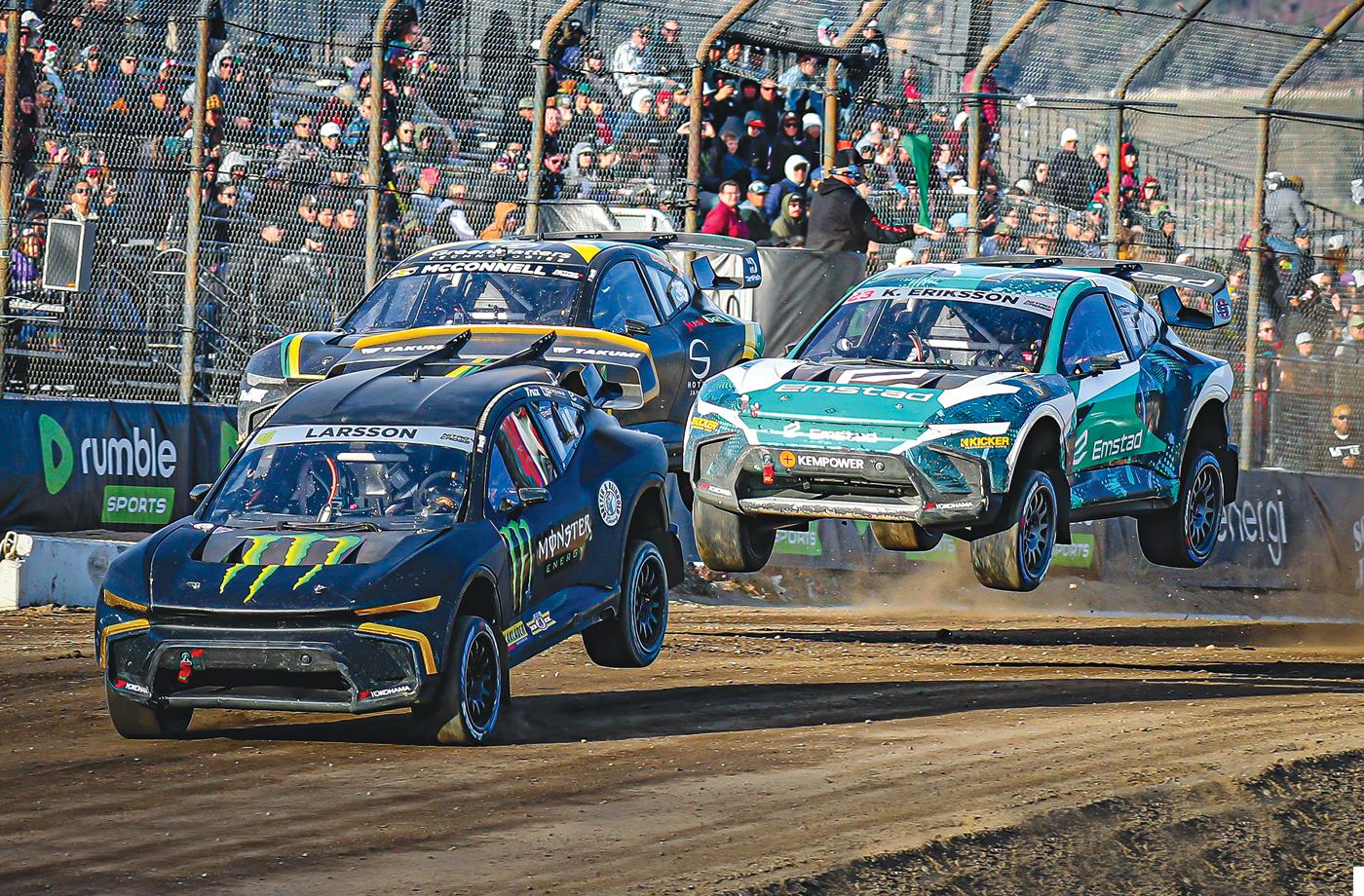
Is EV racing running low or recharging for the future?
“Our vehicle wasn’t born out of a strong environmental stance, it was born out of, ‘What can we extract the maximum performance from?’”
Chip Pankow, the general manager of Nitrocross in Las Vegas, Nevada, was describing a rallycross vehicle that produces 1,088 horsepower, goes 0–60 mph in under 1.5 seconds, and clears 100-foot jumps with ease. Introduced in 2022, the Nitrocross FC1-X car is not only faster than its internal combustion engine (ICE)-powered predecessor, Pankow estimates it’s also roughly half the cost.
“We set out to build a car for our sport, and we wanted to build the fastest, most powerful, most efficient, and most cost-effective platform for what we’re trying to do,” said Pankow. “For our particular sport, electric checked all of those boxes.”
It’s no secret that electric vehicles (EVs) are a hotly debated topic nowadays. We’ll leave the politics for the politicos, but as far as our industry is concerned, the topic begs a relatively simple question: Do EVs belong on a race track?
Pankow approaches that question with a comparatively simple answer: Decide for yourself.
“We very purposely have taken quite a different road than several other EV championships by saying, ‘Hey, we just did it because it’s fast.’ We respect people’s opinions and let them draw their own conclusions about the cars and what they are and whether they should buy one. We’re just putting it out there and displaying what it can do.”
Messaging Matters
Motorsports is driven by passion and tradition. When a sanctioning body announces a major change, outcry from the fan base is common. So as one could imagine, convincing petrol heads that the whiz of an EV can replace the roar of an engine is a tough sell.
At MLe Racecars in Seattle, Washington, co-founders Pat McCue and Jeff Lane built the Ford Super Cobra Jet 1800, which set a world record as the fastest full-bodied EV drag car in a quarter mile, clocking a time of 7.759 seconds at 180.14 mph at the 2024 NHRA Winternationals. Despite their accomplishment, the duo understands EV race cars are only an addition to the world of motorsports, not a substitution.
“You cannot replace thunder in the pipes, and we’re not trying to replace that,” said McCue. “We’re just trying to supplement it. There was a day when you never had imports, front wheel drive, or turbo injected [cars] running drag races. We’re just another technology. We’re not trying to replace internal combustion engines.”
Several sources agreed that EV racing has its place in the sport but isn’t taking over. In fact, the Nitrocross series includes both ICE-powered cars and EV-powered cars in separate races. While its flagship Group E class features the fully electric FC1-X car, its second-tier series, Nitrocross NEXT EVO, features a FC2 car with a turbocharged four-cylinder ICE engine that produces 550 hp and runs on sustainable eco fuel.
“You sit in the stands and watch the NEXT [EVO] cars go by and they’re fast,” said Pankow. “But the magic happens when the next class comes out, the Group E class, and the car is visually so much faster, the performance is quite stunning.”
From Pankow’s view, this delivers an effective message about the viability of EV technology. In other words, show, don’t tell.
“It opens the consumers’ eyes and shows there’s something here. It’s cool, it’s fast. It appeals to more of those base emotions of why people have always bought cars. They want them to look cool, they want good acceleration, they want performance. Our cut through with fans has been really good. They’ve received electric vehicles really well.”
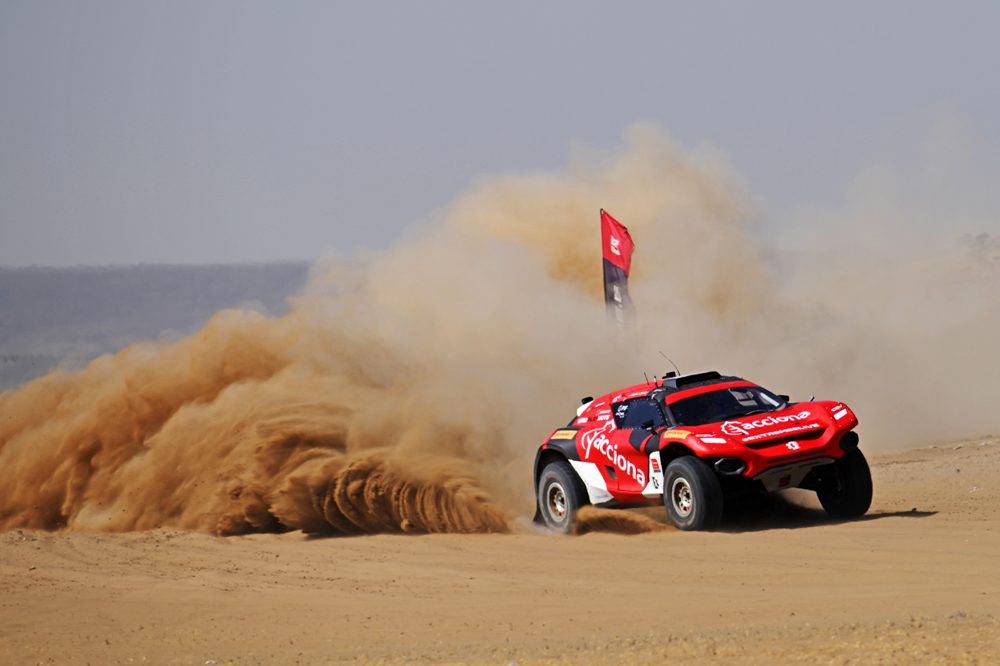
On the flip side, Extreme E in London, United Kingdom, has been one of the more outspoken race series when it comes to promoting an environmental and sustainability message. The FIA-sanctioned international off-road series features electric SUVs racing in remote environments ranging from Saudi Arabia to Scotland.
“Climate change is the biggest challenge this generation faces, and no sporting platform has ever tried to actively address that,” said Mark Grain, technical director of Extreme E. “Over the first four seasons, we’ve utilized seas freight wherever feasible for transportation to significantly cut down CO2 emissions, innovated with green technologies like green hydrogen for sustainable event power, and demonstrated our unwavering commitment to diversity and inclusion in motorsport.”
That’s as strong of an environmental message as you’ll find in the world of motorsports. But ultimately, support for the racing product is what determines the long-term viability of a series, no matter the power source or message. On that point, Grain touts the harsh environments as unforgiving proving grounds for the capabilities of electric vehicles. “Extreme E is using its sports platform to showcase just what E-SUVs can do in the harshest racing conditions.”
Next year, the series will shift to hydrogen, rebranding from Extreme E to Extreme H.
“Pioneering solutions in e-mobility is at the core of our championship,” said Grain. “Despite the evolution from Extreme E to Extreme H, this is still e-mobility. What we are doing is moving to a fuel cell within the car, as previously the fuel cell was out of the car, but it’s very similar. It’s still a battery electric racing car, with the clean energy required produced by a hydrogen fuel cell.”
The CEO of Extreme E, Alejandro Agag, also founded Formula E and E1. Overall, the group is bullish about the prospects of EV racing, the fan support they are seeing, and the message they are sending.
“Without a doubt, EV racing is gaining momentum and at a massive speed,” said Grain. “The consistently increasing fanbases of [Extreme E, Formula E, and E1] show how EV racing is rooted in the future, and motorsport fans are on board and engaged with this future-focused route. Extreme E in particular has achieved its core goal, proving that EVs can be raced to the max, creating incredible racing action and testing technologies in extreme environments.”
Back in the United States, Nitrocross also offers compelling racing with its EV-powered FC1-X. Though from a messaging standpoint, it has chosen to let the on-track action make its case.
“We didn’t try to wrap it up in a green message,” said Pankow. “We did this because it’s really freaking fast, and the economics worked out well. We hope that trickles down to [fans], and maybe [an EV] is not their next immediate purchase consideration, but it gets into their head and is something they consider in the future.”
Silent Competition
EV racing has no shortage of skeptics, but don’t be fooled into thinking the races are a glorified silent parade. EV races feature tight competition and hard-fought battles, due primarily to a common powertrain that puts control back into the drivers’ hands.
“All of our [FC1-X] cars have a common powertrain,” said Pankow. “It’s allowed us to really deliver performance parity across the entire field. Our qualifying and races are really close because of that, and it delivers on one of Travis Pastrana’s primary intentions when he founded the series, which was he wanted this to be a driver’s series.”
Parity is a buzzword in today’s motorsports landscape. Sanctioning bodies are increasingly shifting toward building race vehicles with spec parts—NASCAR’s Next Gen car is a high-profile example. The goal is two-fold: drive down development costs for teams and increase competition and parity through the field.
“The fact of the matter is EV provides a very [close] level of competition at the vehicle level,” said Kirk Miller of Hypercraft, an EV powertrain manufacturer in Provo, Utah. “So now the people who are winning races are the better drivers.”
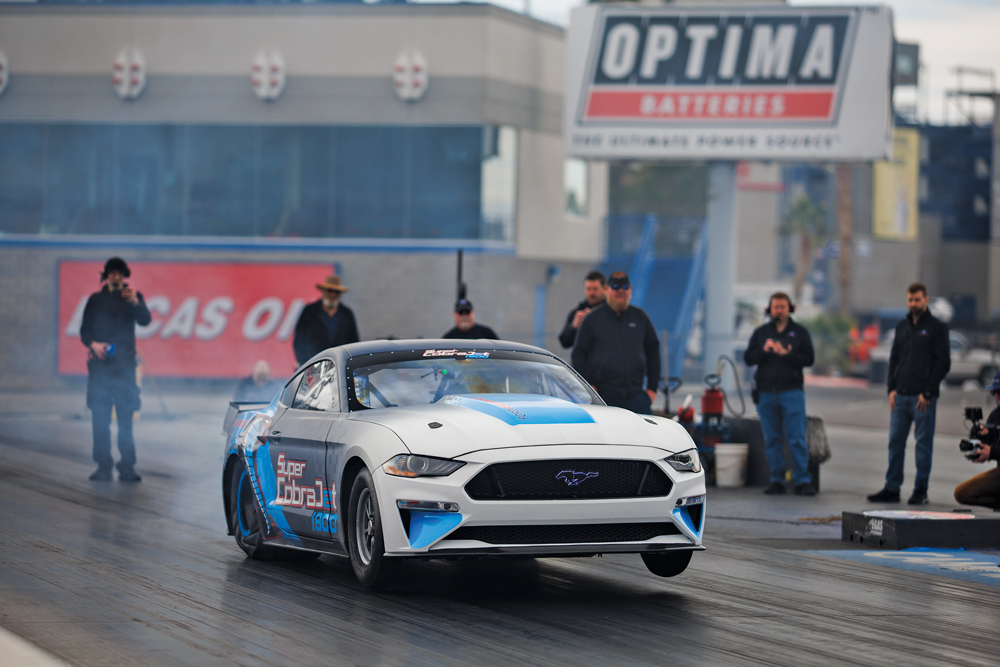
The best drivers winning races based on skill is a popular idea, and EV racing slots nicely into this emerging trend. As Miller explained, it’s easier to maintain balanced performance in an EV versus an ICE engine.
“In many forms of EV right now, it’s a spec motor and a spec battery, so there’s very slight deviation. Whereas from ICE to ICE that has different configurations, now you must try to manage the power curve overall and the different torque curves. So there’s big differences between the two.”
If closer competition is something to be hailed about EV racing, its lack of sound is commonly assailed by critics as a dealbreaker. But perhaps, those critics haven’t been listening closely enough.
“EVs are never going to have that soulful sound,” said Miller. “Now again, there is a tone that goes with them, and there’s a gear sound. You can also hear things that you never heard before, like the tires moaning while going through a corner at max grip. There are sounds; they’re different.”
The difference is notable from inside the car as well, as noted by retired NASCAR Cup Series driver David Ragan, who has been the test driver for NASCAR’s EV prototype car—technically a Crossover Utility Vehicle (CUV)—that was unveiled at this year’s Chicago Street Race.
“Driving a CUV, the viewpoint was a little different from the driver’s seat, but the sights and sounds were extremely different,” said Ragan. “I could hear the tires squealing or chattering mid-corner, you could smell the brakes a lot more. I feel like the [ICE] engine smells and noise overpower a lot of things that you just get used to.”
The sensory experience still exists in EV racing, it’s just more subtle. While the majority of race fans still prefer the sound of thunder in the pipes, being able to hear tires squealing and smell brakes burning carries a unique appeal.
Miller brought up another potential benefit of quiet race cars. After lamenting the fact that many of his hometown tracks in New Jersey shuttered over the years due to “neighborhoods closing in on the tracks and complaining about the exhaust noise,” he believes EVs offer a unique solution.
“If you have a track and there’s [noise] complaints, let’s say you have track cars with Skip Barber for example, wouldn’t it be awesome if you had a car with virtually zero sound signature? One that you could just run on a Wednesday night and not have neighbors complaining?”
It’s a compelling argument. While nobody is suggesting the Indy 500 should sound like a golf tournament, EVs could be a lifeline for small tracks struggling to survive.
“I love that sound of a race car, and you’re going to lose it [with an EV],” said Miller. “But if the alternative is, ‘Hey, we’re going to have to shut this track down because everyone is complaining about the noise, or would you mind driving this car instead?’ I’m in.”
Opportunities and Limitations
EV racing is very much in its infancy, so the potential is still largely untapped. Nevertheless, electric cars have some very clear benefits and limitations when applied to the world of motorsports.
According to the team at AEM Electronics, a Hawthorne, California-based company that specializes in performance electronics and EV conversion products, EV racing is currently best suited for short races. “EVs typically do really well in sectors of motorsport that require short, intense bursts of power like drag racing, time attack, autocross, and drifting,” said one company source.
Each of those motorsports segments work well for EVs, but drag racing is a natural fit.
“Drag racing is a unique opportunity because of its time constant—it’s under a 10-second run,” said McCue. “The opportunity to lay it all out there in a short period of time is very attractive to EVs, in my opinion. You can really showcase the torque and horsepower that an electric motor can make, without having to build a ridiculously large battery pack.”
Beyond its Ford Super Cobra Jet 1800 demonstration car, MLe Racecars is hoping to eventually help launch a spec EV competition series in NHRA. Ideally, it would feature electric versions of OEM-produced stock drag cars, such as the Ford Mustang Cobra Jet and Chevy COPO Camaro. “Once the sportsmen out in the world see them running consistently, reliably, and getting press and wins, I think it’s going to light a fire and people are going to get excited about it.”
For now, McCue is encouraged by a growing scene of street legal EVs hitting the track.
“I think you’re going to see more of these street legal EVs participating in different sanctioning bodies and different events,” he said. “They’re a blast. I drive my car to the track and charge when I get there, then I go run a 12.2-second quarter mile in a fully street legal Mach-E Mustang. It’s super fun, and a lot of people enjoy doing it.”
Hill climb events are another emerging strength for EV racing. In fact, this year’s overall winner at the Pikes Peak International Hill Climb was an EV, with Romain Dumas piloting a Ford F-150 Lightning SuperTruck to the top of the mountain in just over 8 minutes and 53 seconds.
“Pikes Peak is a great place for EVs,” said Miller. “With hill climb events, you don’t have to worry about altitude and air fuel ratios and things like that.”
EV racing is finding success with various short race formats, but longer races are where its current limitations become evident.
“The challenge for the sanctioning bodies is going to be range and weight,” said Miller. “If you need 100 miles out of the car or a full race, you need to get way up there in kilowatt hours. But every time you add one more kilowatt hour, you’re adding a chunk of weight. Having a 700-pound battery in a race car, that doesn’t work.”
Battery technology will continue to improve, with range going up and weight going down. But for now, EV racing has found its sweet spot in short races. In a world of shrinking attention spans, that’s not necessarily a bad spot to land.
“These shorter interval heat races are another form of motorsports that the people really love,” said Miller. “[The fans] get to see four or five races in just a couple of hours.”
OEM Proving Grounds
Traditionally, motorsports have served as both a marketing and development tool for OEMs. Nowadays, perhaps nowhere is that more relevant and pertinent than in EV racing.
It is no secret that consumer EV sales have slowed recently, but how that will affect the EV racing market remains to be seen. Our industry sources offered mixed views on the prognosis.
“I do think that the falloff in EV sales within the OEMs will probably temper [EV racing] a little bit in the short term,” said McCue. “The OEMs want to drive it on Sunday and sell it on Monday. That’s part of their deal.”
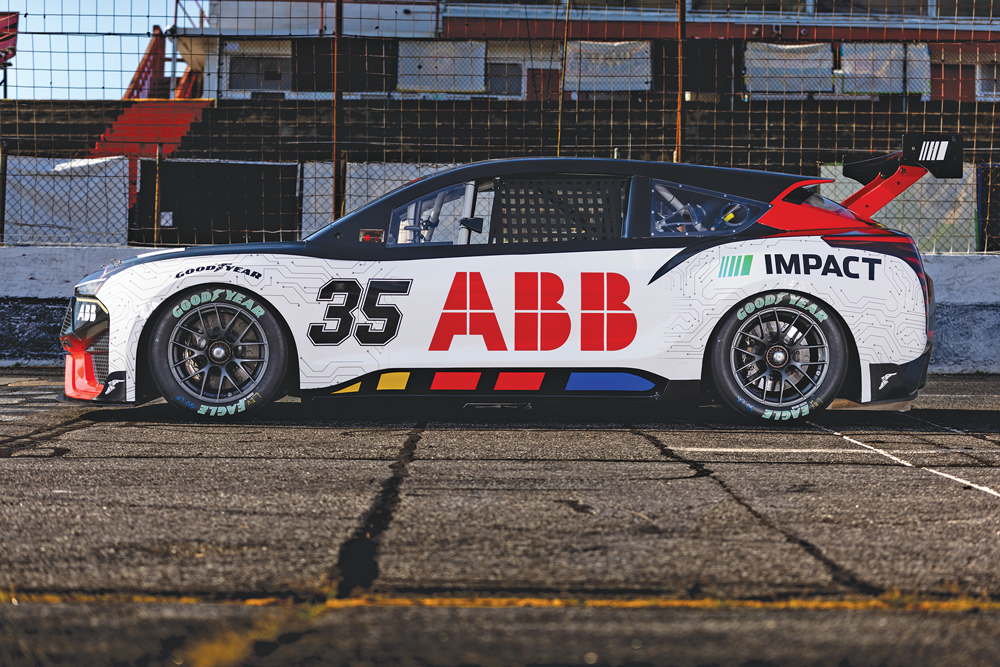
On the other hand, Pankow sees the downturn as an opportunity. “It’s the perfect time for us. If [OEMs] were selling EV cars like they were [in late 2023], they don’t need us to market and differentiate and launch new vehicles. Now they do.”
Pankow said his team was in discussions with several major OEMs, touting Nitrocross as an ideal platform to market to a younger demographic. “You’ll see entries from manufacturers that look like their mid-priced EVs, and it matches up with the demographic that we’re delivering, both from a media standpoint and live.”
Meanwhile, NASCAR’s recent foray into developing an EV race car was done without any plans for launching an EV series. Instead, the endeavor was aimed at creating a development and demonstration tool that would benefit its OEM partners—both today and in the future.
The value of a partnership between a sanctioning body and OEMs cannot be overstated, but it was underscored by two comments delivered at a press conference following NASCAR’s EV launch in Chicago.
“If you look out across the landscape, one thing that’s for certain is that change is accelerating all around us,” said John Probst, NASCAR senior vice president and chief racing development officer. “From a NASCAR perspective, we want to be in the driver’s seat when it comes to where our future is going. It’s not fair to the collaboration that we have with our OEM partners if we go down a particular route that they’re not interested in or is not relevant to them.”
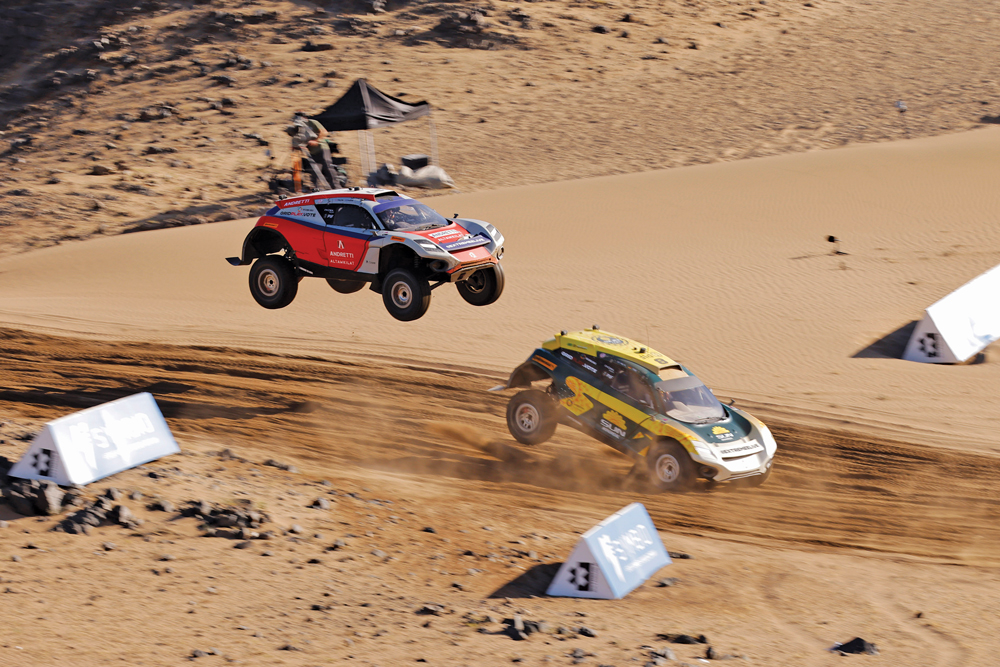
“From the beginning, Chevrolet was founded from racing, and we use our racing platform to really explore new technologies,” said Dr. Eric Warren, General Motors executive director, global motorsports competition. “Now as we look at electrification and different electrical technologies, [motorsports] really provides a great environment to push technologies. As the company has progressed, developing vehicles virtually and looking at the digital engineering space, motorsports really leads in the design and development of vehicles now. You have to understand the physics of it to be able to predict it, and racing allows us to keep advancing those technologies.”
Advancing technology can be traced back to racing’s earliest roots. Innovation is the heartbeat of this industry, no matter the decade, no matter the car, no matter the technology. EV race cars are just the latest chapter in the ever-growing book of vehicle innovations driven by motorsports.
Fortunately, there’s still much to be written.
“With the level of investment that’s being made, I think there’s going to be some really cool ‘aha moments’ that we can’t even fathom right now,” said Miller. “What’s it mean to the PRI world? Performance. Power. Right now, we’re on the cusp of another one of those opportunities where we can lead the way with the OEMs and the performance side. That’s really exciting to me, and I hope people get that.”
SOURCES
AEM Electronics
aemelectronics.com
Extreme E
extreme-e.com
Hypercraft
hypercraftusa.com
MLe Racecars
mleracecars.com
NASCAR
nascar.com
Nitrocross
nitrocrossracing.com
 MEMBERSHIP LOGIN
MEMBERSHIP LOGIN JOIN PRI
JOIN PRI


